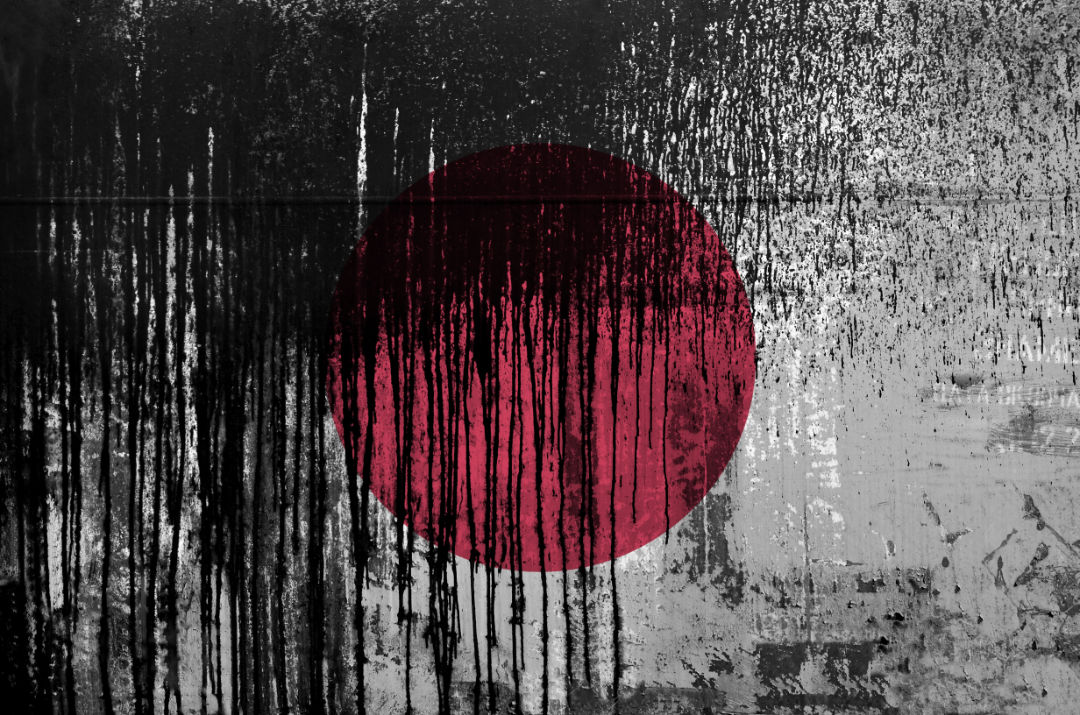When thinking about Japan, it's hard to choose only one (or even a few) of its many charms. Japan can amaze with its sights, leave you in awe through its culture, fill your days and nights with its (often crazy) entertainment, and tickle your curiosity with its many subcultures. It's no wonder that this country is one of the most sought after among visitors from all over the world.
At the same time, though, we should not forgeth that, albeit rarely, the Land of the Rising Sun is occasionally struck by powerful earthquakes, typhoons, volcanic eruptions, and tsunamis.
These words could probably scare most people, but knowledge is usually the best cure against excessive fear. While these rare events can be on even more rare occasions quite dangerous, it's important to understand that in the vastest majority of cases we would not even realize something is hapening.
Earthquakes
Japan is hit by earthquakes daily. But don't cancel your plans to visit next year quite yet. Most of these shocks are imperceptible. Items in your house would not even shake, and you would never know an earthquake had just occurred.
Japan keeps very detailed record of past earthquakes and is one of the world leaders when it comes to tracking them. Predicting an earthquake is an almost impossible task, but we know that since 648 C.E. to the date of this article (April 8 2020), there have been 81 earthquakes powerful enough to cause damage, and sometimes loss of life. That amounts to about 1 significant earthquake every 16 years.
Now for some good news. While these events can be earth shattering (pun intended), while you are in Japan, you are in one of the safest countries in the world, when it comes to ability to handle such occurrences. Japanese authorities, society, and individuals have turned earthquake preparedness and response into a science. Response teams are extremely well trained, buildings are designed to withdstand massive shakes, and there are shelters to be found all across the country in big cities, as well as in rural areas.
Japan can also catch some people off guard with other meteorological phenomena that may be less talked about than earthquakes. In 2018, for example, Japan was struck by one of the worst summers anyone could remember in a combination of extreme weather and natural disasters. This was such a rare occurrence that no one alive seemed to be able to remember a worse summer. Nevertheless, it never hurts to know what to expect/
Extreme heat
Summer in Japan, especially between July and mid-September can be extreme. Even for those of you used to very hot climates, and high summer temperatures, Japan could be brutal.
Especially considering that you are likely to be walking a lot, visiting many places under the merciless sun and humidity, make sure to dress appropriately, take frequent breaks, stay hydrated, and remember that it's a vacation. Don't strain yourself too much.
Rainy season
Depending on the region, from the month of May until the end of July, Japan is visited by its yearly tsuyu or bayu, the rainy season. The cold air currents from the north collide with the warm onses traveling from the south, resulting in almost permanent rain for roughly a month.
While usually there are no issues, other than the discomfort constant rain may cause, in extreme cases, this can cause floods and landslides.
Fortunately, the rainy season is as predictable as it is common, having been part of Japan for millenia. the infrastructure of the country, as well as its buildings, are by and large impervious to it. If you are visiting Japan during this period, you are going to want to have a good raincoat and an umbrella always handy, though.
Typhoon season
Typhoon season hits the country between May and October, but it's exceedingly rare to see one that covers the whole country. Usually a few areas will be affected. Typhoons are usually too weak to cause serious issues, but at times they can be quite dangerous, and rarely devastating.
In any case, best case scenario, a typhoon is a powerful storm accompanied by very heavy rains, so, should one hit your area while you are visiting, stay indoors, ewnjoy some snacks and tea and wait it out.
In the extremely rare cases of a typhoon being a poweful one, follow the emergency procedures, if needed, but for the most part, once again, stay indoors, and, if needed and possible, board up windows.
We talked about a lot of what could go wrong, but we are yet to cover prevention, and more importantly how to behave, should be in an emergency situation.
Disaster Preparedness Event
The Tokyo Metropolitan Government (TGM), and many other local and national governments and organizations, often organizes events to help people prepare for emergencies. In 2018 and 2019, in preparation of the now postponed Olympics, the TMG organized an event on a very large scale to help preparing not only nationals, but also foreigners visiting the country. Tokyo alone was in fact expecting an influx of some 10 million people for the Olympics and Paralympics.
While, due the measures taken to reduce the spread of COVID-19 in the country, the games have been postponed to 2021, the information and measures learned during this TMG-organized disaster Preparedness Event, will be useful regardless on when you decide to visit (or if you live here).
VR earthquake and disaster experience
One of the stands at the convention allowed visitors to experience an earthquake first hand, and safely, via the use of Virtual Reality, and cabins and sits reproducing the shaking.
VR allowed participants to move in a virtual city hit by a powerful earthquake, giving a very realistic view of what reality may be like. The people we interviewed (one of whom had experienced the powerful Osaka earthquake of June 18 2018)
Earthquake simulation room
The simulation room, put you in an actual rigged room that would shake and simulate an earthquake, with falling items, and powerful shocks. Participants are in the room, and instructors give directions, in the midst of moving tables, falling props, and large monitors.
The ones that participated to the drill realized that the shock of an earthquake is much more powerful than one would imagine, but it helps to experience it first hand in a safe and controlled environment, so that there would be no surprises in a real-life scenario.
Ok, that's all fine and dandy, but what do I do if an earthquake hits?
Let's start with the obvious: do not panic. Now, of course we know that when someone tells you not to panic, or to try and stay calm, it's a little paradoxial, but there are ways to actually be calm in an emergency situation. Once again knowledge and preparation are key. Read science, and if you have the opportunity participate to drills, or watch videos. The more prepared you are before something happens, the calmer you will be able to be if you are ever forced to face the same situation. Aside from that:
1 Protect yourself
Duck under a table, hold onto its legs, make sure your head is covered. should a table not be available, use pillows, matresses, quilts, and stay away from windows and doors. always protect your head.
2 Do not rush
After the shock is over, wait and make sure there are no aftershocks. Look around to confirm the furniture is stable and there is no danger of heavy items falling.
Switch off your circuit breakers and turn off the main gas valves (by the way, if you feel a shock while cooking, quickly turn off the gas, and possibly the main valves as well).
3 Many building, especially in Japan meet resistance to shock standards that make them safer. If you are not sure whether the building you are in meets these standards, when the shocks subside, open windows and doors to make sure you have multiple points of exit, but make sure leaving the building is the safest action.
4 If you are trapped
It may sound counterintuitive but do not shout. It can cause exhaustion, as well as breathing problems. Instead, try to get your hands on anything that could produce loud noises. Whistles, pans, silverware, metal items in general, and if you are able bang on metal pipes that might run through the walls in your room or apartment.
5 If you are outside
Stay away from glass buildings, or older structures. Seek refuge in large concrete buildings, or better yet shelters, and act quickly. Avoid running with crouds, or against them, do not give in to panic. You cannot outrun a quake.
First-aid Drills
Once you have ensured your safety, you may need to help someone else. Of course, ideally, you would leave that to emergency personell, but you may be in a situation where you are the only one who can help.
Of course you are not going to want to do something you are not sure about. For this reason the disaster preparedness event offered a comprehensive course on first air and CPR. What to do then? Read on.
1 Make sure the person is conscious
It might sound unnecessary or even silly, but call the person witha loud voice, as if you were trying to get their attention. Move their feet and arms to see if they respond, react, or if they suffered injuries.
2 Try not to handle the situation by yourself
Ask for help, make sure that someone looks for emergency personnel and ask for an AED (Automatic External Defribillator)
3 Intervene
should you be in the position of being the only one able to help, act (assuming you know how to proceed).
If you notice that the victim is not breathing, with your hands on the victim's chest, press down (about 5cm) rhythmically for amout 100 times/minute. Every 30 chest compressions, breathe air into the victim's lungs twice. If the victim is bleeding, avoid the breathing, and only apply chest compressions.
Fire Evacuations
The event prepared attendees not only for earthquakes, but also for other emergencies, including fire evaquations.
Similarly to what they did for the earthquake simulation, the organizers set up VR machines for participants to experience looking for, and finding the best way out of a burning building. Participants could "walk" via a controller, and crouch in real life when necessary, while looking around trhough Virtual Reality goggles.
Evacuation
Should you need to evacuate an area, remember that evacuations in Japan are extremely effective, and oftentimes the loss of life is zero, even when faced by potentially very dangerous phenomena.
Language barrier
How can you follow directions if you can't understand the language?
Emergency personnel, while maybe not fluent in English, will usually be able to direct you. Furthermore the emergency announcements played via speakers are often in multiple languages.
Should you not be able to hear a language you understand, follow the signs, and the physical directions the personnel gives you (usually with light sticks).
If you have internet access, utilize NHK World websites and channel for in-real-time information and instructions in English. Alternatively, call emergency numbers, and ask to speak with staff in English (or other languages). Find a list of useful resources at the end of this article.
Useful Japanese Phrases
Should you be in need of immediate assistance in person, and should you need to use Japanese, but can't speak the language, here are some useful phrases that will come in handy.
・Where is the evacuation center?
避難所はどこですか? / Hinanjo wa doko desuka?
・I am looking for my family.
家族を探しています。 / Kazoku wo sagashiteimasu.
・What is the name of this place?
ここは、どこですか。/ Koko wa doko desu ka?
・I need information in English.
英語の情報がほしいです。 / Eigo no joho ga hoshii desu.
・When will transportation be back in service?
(電車・バス・空港)はいつ復旧しますか。 / Densha, basu, kuuko) wa itsu fukkyuu
shimasuka?
・Where can I get (food/water/a blanket)?
(食べ物・水・毛布)はどこで手に入りますか?/ Tabemono/mizu/mofu) wa doko de te ni
hairimasuka?
・Where can I make an international call?
国際電話はどこでかけられますか? / Kokusaidenwa wa dokode kakeraremasuka?
Emergency Bags
Something that can really make the difference between struggling in an emergency, and facing it the best you can, is emergency bags. whether you are a resident or just visiting, an emergency bag in Japan can always be useful, and if nothing else, give you peace of mind.
If you are traveling, it's hard to find recomendations on line on how to have a "travel emergency bag" that won't cort you all your packing space, so here is one we organized for you:
1. Mobile phone charger
2. Whistle
3. Paper map (you can also get one in Japan with emergency routes and shelters mapped out). If you prefer, save a google map to use even offline, or take screenshots.
4. Flashlight
5. Coins (Japan still has a lot of public phones, in case you find yourself in need of one).
6. Picture of the people you’re travelling with, in case you get separated. Make sure you also keep your ID’s and health insurance card handy.
7. Simple first aid kit, if you like to be super prepared.
8. Space blanket.
9. Laminated index card with your name, birth date, blood type, any allergies/health issues/medications you are taking, contact name and phone number, and emergency contact information. (Make sure each of the people in your party has the same.)
10. When you’re in Japan, buy a few instant ramen cups and water bottles, and put them in your backpack with all the other stuff you brought from home.
All these items won’t occupy more than a suitcase pocket worth of space, but will be very helpful.
There’s more that you can prepare, should you feel the need to, but the above items will save you space, and help you in an emergency situation. If you’re interested in a comprehensive list of what the Japanese government recommends its citizens to always have at the ready, look at pages 90-91 of the Tokyo Metropolitan Government Disaster Preparedness Guide linked at the end of the article.
For those of you preparing to visit Japan, it’s important to keep in mind that the chances of you being in a serious emergency due to disasters in Japan are very slim. Read, learn, ask, be prepared, but don’t let this scare you into not enjoying your stay in Japan.
You now know all you need to face any situation, and chances are, you’ll never need to use that knowledge.
Enjoy Japan! You’ll miss it when you leave it.
A very useful article published by LiveJapan on emergencies and useful emergency contacts in Japan
TOKYO METROPOLITAN GOVERNMENT FULL DISASTER PREPAREDNESS GUIDE (English)









No comments